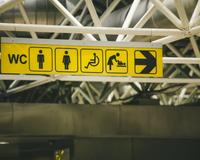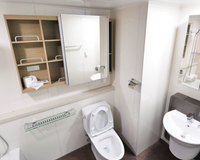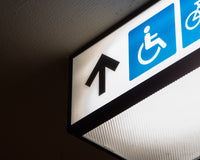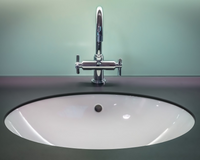Wall-mounted soap dispensers have become essential fixtures in commercial spaces, offering convenience and promoting better hygiene practices. Whether you manage an office building, restaurant, or retail space, knowing how to properly install a wall-mounted soap dispenser can save you time and money while ensuring your facility meets health and safety standards.
This comprehensive guide walks you through every step of the installation process, from selecting the right tools to testing your newly mounted dispenser. You’ll learn about both screw-mounted and adhesive installation methods, discover important safety considerations, and gain the confidence to tackle this project yourself.
Tools and Materials Needed
Before starting your installation project, gather all the necessary tools and materials. Having everything on hand prevents mid-project delays and ensures a smooth process.
Essential tools include:
- Electric drill with drill bits
- Level
- Measuring tape
- Pencil for marking
- Safety glasses
- Screwdriver
- Stud finder (optional but helpful)
Required materials include:
- Wall-mounted soap dispenser
- Mounting screws (usually included with the dispenser)
- Wall anchors (if mounting into drywall without studs)
- The manufacturer’s installation instructions
- Adhesive mounting strips (if using the adhesive installation method)
Double-check your soap dispenser’s packaging to confirm all mounting hardware comes included. Some dispensers may require specific screw sizes or additional brackets.
Preparing for Installation
Proper preparation sets the foundation for a successful installation. Take time to carefully select your location and assess the wall’s condition.
1. Select the Right Location
Choose your installation spot carefully, considering both functionality and accessibility. The Americans with Disabilities Act (ADA) requires soap dispensers to be mounted between 40 and 48 inches from the floor to the dispenser’s operating mechanism. This height range ensures accessibility for users of all abilities.
If you’re installing an automatic soap dispenser, pay special attention to nearby reflective surfaces. Shiny countertops, mirrors, or metallic fixtures can interfere with the sensor, causing false activations or preventing the dispenser from working correctly. Refer to the manufacturer’s guidelines before finalizing your location.
2. Check the Wall Type and Condition
Identify your wall type before drilling. Drywall requires different mounting than tile, concrete, or wood surfaces. If you tap the wall and hear a hollow sound, it indicates drywall, while a solid thud suggests concrete or a wall stud.
You can also use a stud finder to locate wall studs. Mounting a soap dispenser to a wall stud offers the strongest support, especially for heavier soap dispensers. If studs aren’t available in your desired location, using wall anchors will provide adequate support for most dispensers.
Check the wall’s structural integrity by examining for cracks, water damage, or loose tiles. Address any structural issues before proceeding with the installation.

Screw-Mounted Installation Step-By-Step Guide
Screw mounting provides the most secure installation, which is why it’s the preferred method for commercial settings where dispensers receive heavy use.
Step 1: Mark the Mounting Holes
Start by holding the mounting bracket against the wall at your chosen location. Use your level to ensure the bracket sits perfectly horizontal. Even a slight tilt will be noticeable once the dispenser is installed.
Mark the screw hole locations with a pencil. Double-check your measurements against the manufacturer’s template, if provided. Remove the bracket and verify your marks are level by measuring the distance between them and comparing them to the bracket’s hole spacing.
Step 2: Drill the Pilot Holes
Put on your safety glasses before drilling. Select a drill bit slightly smaller than your screw diameter to create proper pilot holes. This prevents the wall from cracking while ensuring screws grip securely.
Drill straight into the wall, maintaining steady pressure. For drywall installations, drill only deep enough to accommodate your wall anchor. For wood or stud installations, drill approximately two-thirds the length of your screw.
Clean out any debris from the holes using a small brush or compressed air.
Step 3: Install Wall Anchors
Wall anchors provide secure mounting when wall studs aren’t available in your desired location. These expanding fasteners distribute weight across a larger area of drywall and prevent the screw from coming out.
Insert the wall anchor into your pilot hole, and tap gently with a hammer until the anchor sits flush with the wall surface. Some anchor types require a screwdriver to fully expand them within the wall cavity. Test each anchor by gently tugging on it. Properly installed anchors won’t move or rotate in the hole.
Step 4: Mount the Soap Dispenser
Align your mounting bracket with the prepared holes, and insert the screws. Tighten gradually, alternating between screws to maintain even pressure. Avoid over-tightening, which can strip the threads on the screw.
Once the bracket is secure, attach the soap dispenser according to the manufacturer’s instructions. Most dispensers either slide onto the bracket or attach with additional screws or clips.
Adhesive Mounting Step-By-Step Guide
Adhesive mounting offers a drill-free alternative, though it’s less common in commercial settings. This method works well for temporary installations or situations where drilling isn’t possible due to tile work or electrical concerns behind the wall.
Step 1: Prep the Surface
Surface preparation is critical for adhesive mounting. Clean the wall thoroughly with a degreasing cleaner to remove soap residue, oils, and dirt. Any contamination will reduce the adhesive’s strength.
Allow the surface to dry completely before proceeding. Rough surfaces may require light sanding to create better adhesive contact.
Step 2: Apply Adhesive Strips
Remove the backing from one side of the adhesive strips, and apply them to the designated areas on your soap dispenser’s mounting bracket. Press firmly to ensure complete contact.
Remove the remaining backing, and carefully position the dispenser against the wall at your marked location. Press firmly for 30 seconds to activate the adhesive bond.
Most adhesive strips require a 12-hour curing period before the dispenser can bear its full weight. Avoid loading soap or using the dispenser during this time.

Final Adjustments and Testing
Step back and visually inspect your installation. The dispenser should appear level and sit flush against the wall. Make any necessary adjustments, and test the dispenser’s stability by gently pushing and pulling on it. Properly installed dispensers should feel solid with no movement or flexing.
Follow the manufacturer’s instructions for loading soap into your dispenser, whether it requires foam or liquid soap. Test the dispensing mechanism several times to ensure proper operation. For manual dispensers, check that the pump mechanism works smoothly. For automatic models, test the sensor range, and adjust the sensitivity settings, if available.
Complete Your Commercial Hygiene Setup Today
Understanding how to properly install a wall-mounted soap dispenser empowers you to maintain your facility’s hygiene standards while controlling installation costs. Whether you choose screw mounting for maximum security or adhesive mounting for flexibility, following these detailed steps ensures a professional-quality installation.
When you’re ready to upgrade your facility’s hygiene capabilities, browse Choice Builder Solutions’ selection of automatic hand soap dispensers to find the perfect option for your commercial space. Our professional-grade dispensers combine reliability with innovative features to keep your facility running smoothly.





